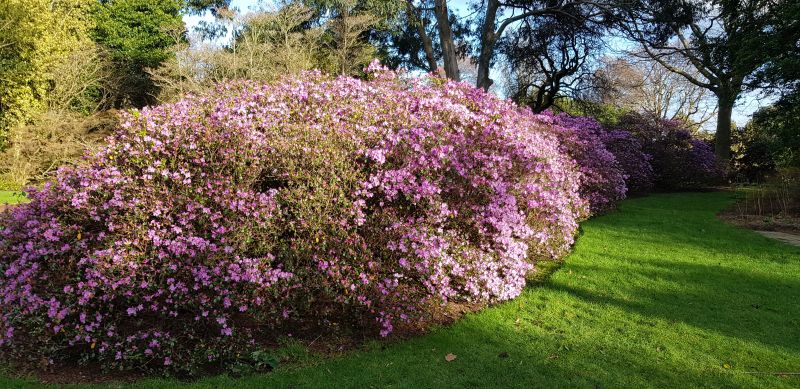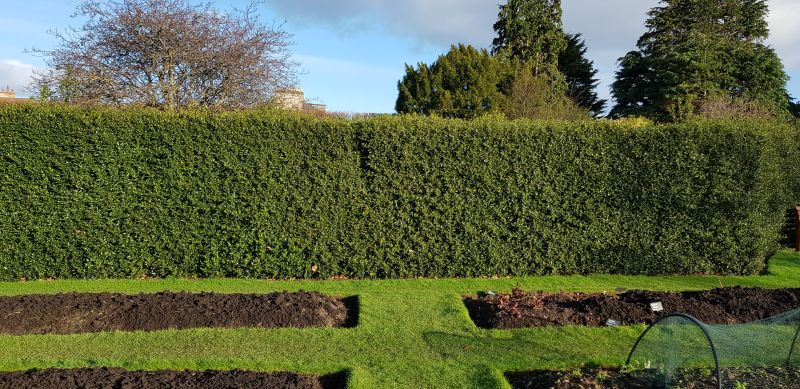Winter storms and ageing fence posts and panels are not good companions. This is the time to replace your garden fence and what better way than to plant a hedge. Choose a selection of bare root deciduous hedging plants. Set in a double, staggered row about 450mm apart in well prepared soil. In three year’s time you will have grown a vertical habitat teeming with bird and insect life, providing cover and shelter to increase garden diversity.
Your choice of species; Beech, Hornbeam, Hawthorn Hazelnut, Forsythia and the upright Cotoneaster species. Mix and mingle evergreen species; Holly, Yew, Cherry laurel, Camellia and Escallonia. If you wish brightness in your life then “Golden Privet” Ligustrum ovalifolium ‘Aureomarginatum’ is a good choice. Don’t dismiss the much maligned Leylandii conifer. These dense blocks of green provide thermal insulation for roosting birds giving more protection than a draughty perch in a deciduous Beech hedge when the next “beast from the east” arrives.
During the first two years following planting, keep watered during dry spells and control the competition. Keep the base weeded. The roots from the hedge also absorb soil moisture helping to reduce run off during our increasing heavy and intense rain storms. Already got a hedge? Then let it grow in height this year. Birds nest at different heights in trees, shrubs and hedges. By allowing your hedge to grow taller and thicker the range and diversity of bird life in your garden will also increase. Not to the height of the Beech hedge here at RBGE, but try 4 – 5 metres with your neighbours’ agreement. At this height birds will have a tremendous viewpoint to survey safe feeding sites.

An informal hedge of Rhododendron Praecox grex (ciliatum x dauricum)

